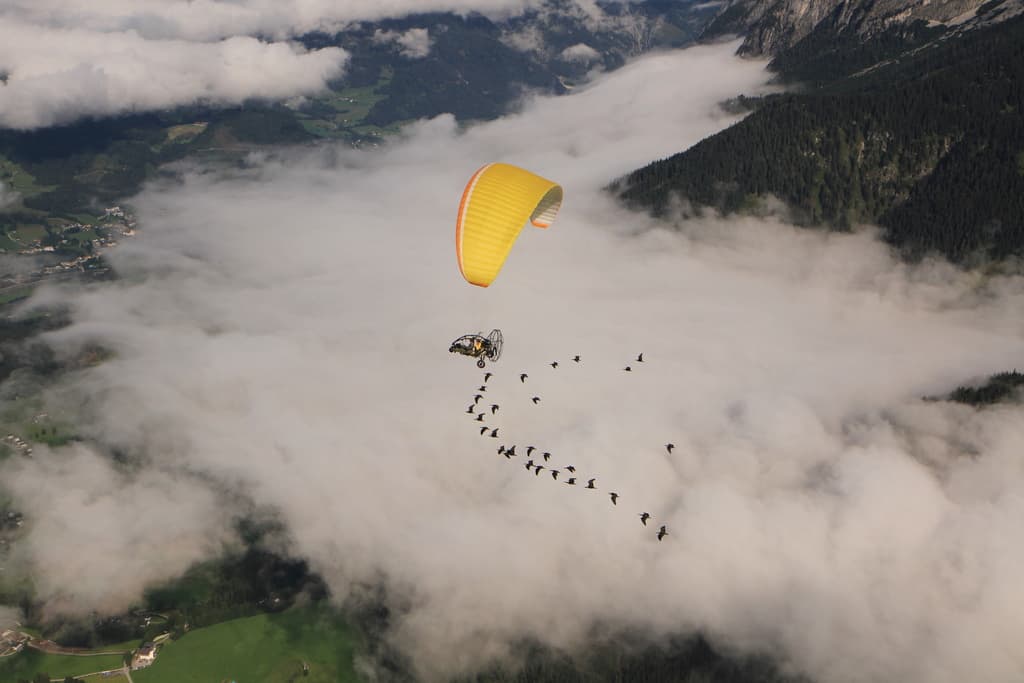The flock consists of 36 birds and follows the researchers, who are flying an ultralight aircraft, on a journey that can take up to 50 days and is approximately 2,800 kilometers long. They departed on August 13 and are expected to arrive at their destination in Andalusia, southern Spain, in early October, according to The Guardian.
The aircraft has a small fan-like engine at the rear and a yellow parachute that keeps it hovering. Before the journey, parts of the research team had taken care of the birds and become their security. During the route, the same researchers sit on the plane and wave and shout encouragingly to the birds.
The Waldrappteam project is the first time this method is being used to reintroduce a migratory species. Biologist Johannes Fritz came up with the idea and is the one flying.
It's an almost surreal experience, being up there in the sky with these birds, experiencing them in the air, he says.
Nearly Extinct
The northern bald ibis, known for its red head and long curved beak, was once common in North Africa, the Arabian Peninsula, and large parts of Europe. After hunting and habitat destruction, they were extinct in Central Europe for over 300 years, with small populations surviving in zoos.
Breeding to increase the population has been ongoing for over two decades, but without guidance from wild ancestors, the birds did not know in which direction to fly for the winter. Before the guidance from the research group, they flew in different directions and died.
To succeed with the migration, the chicks are taken from the zoo where they are bred, just a few days old, to be raised and imprinted by humans who they will then follow. Once they arrive at the wintering site, the birds are completely independent.
The Climate Crisis Challenges
The Central European population has increased from zero to almost 300 since the project started in 2002. The first generations have already bred in the wild and taught their young the migration route.
However, the climate crisis has made the first migration route to Italy more difficult, and the research group must take the birds on a new route. The species migrates later now, and therefore the route over the Alps becomes dangerous and cold, and the goal is now Andalusia in Spain. The new route is almost 300 kilometers longer than the previous one.
This method we have developed is urgently needed for an increasing number of other migratory bird species. It's a flagship project that indicates what is possible, says Johannes Fritz.






